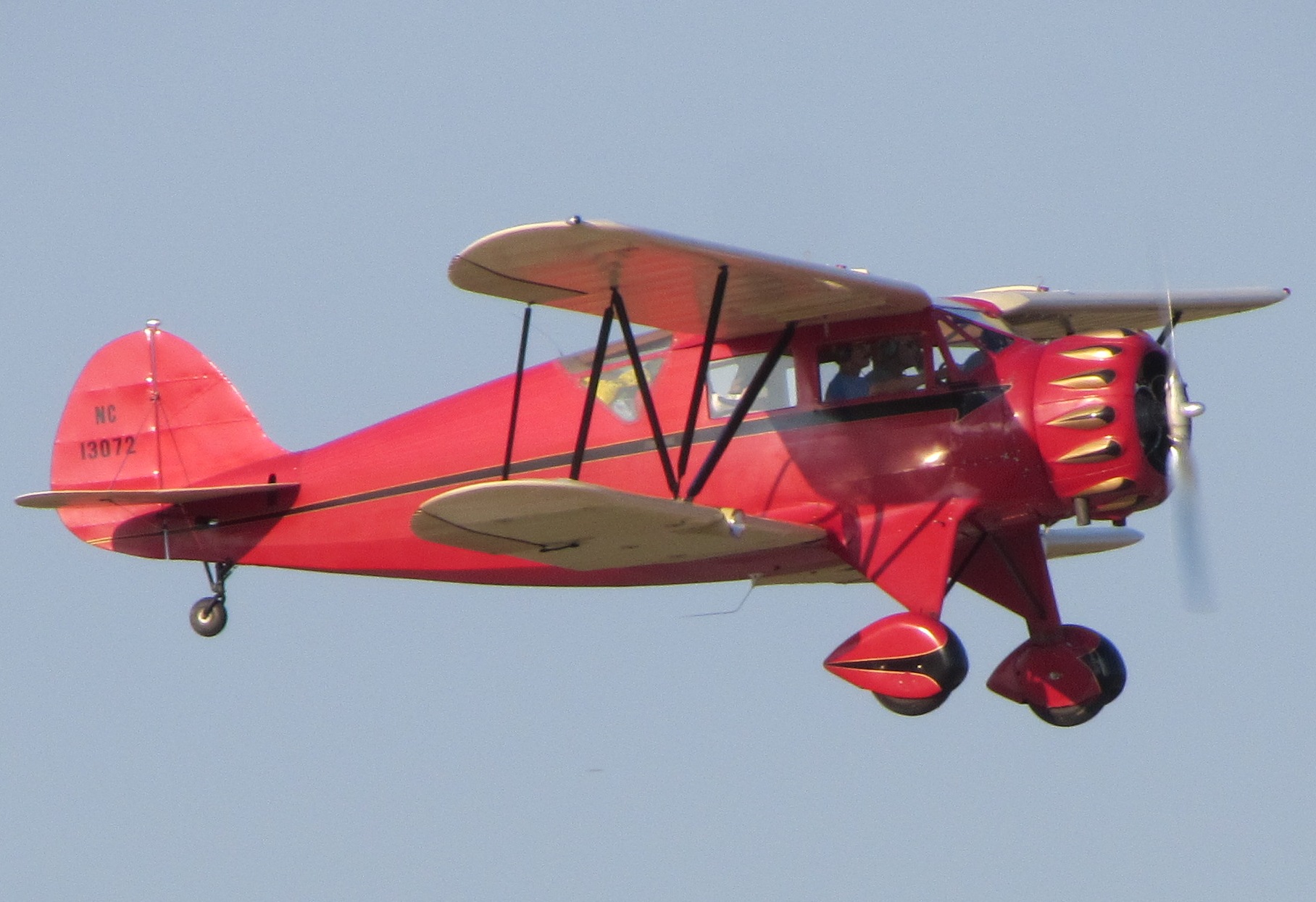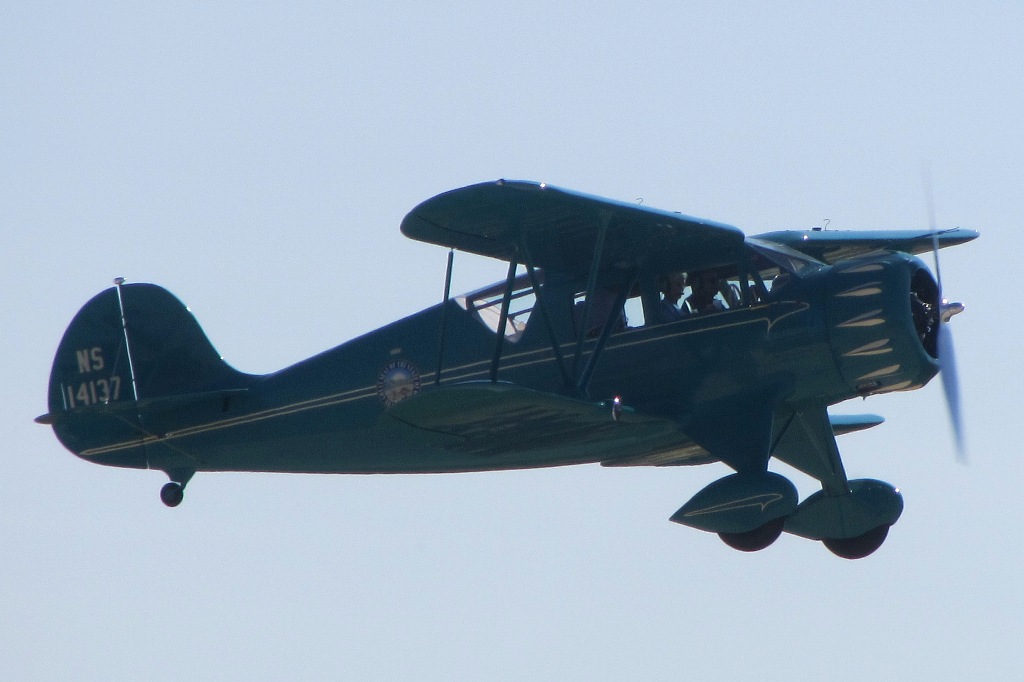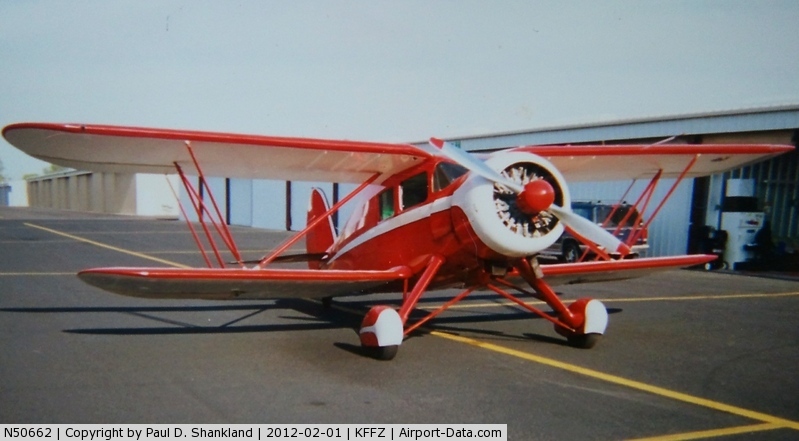Waco CJC on:
[Wikipedia]
[Google]
[Amazon]
The Waco Standard Cabin series is a range of
accessed 10 June 2009. For example, the YKC of 1934 became the YKC-S of 1935 and the YKS of 1936, though with additional minor improvements.


 :;QDC :
:;QDC :

 :;UIC : Continental R-670 engine. 83 built.
:;UIC : Continental R-670 engine. 83 built.
 :;YKC : Jacobs L-4 engine. 60 YKC built,
:;YKC : Jacobs L-4 engine. 60 YKC built,


 ;
*
;
* ;
* Royal Norwegian Air Force (1 x YKS-7)
;
* Royal Norwegian Air Force (1 x YKS-7)
 ;
* South African Air Force (UEC, others)
;
*
;
* South African Air Force (UEC, others)
;
*
FAA Registry Search for Waco
accessed 12 June 2009. a number have also found their way into museums.
American
American(s) may refer to:
* American, something of, from, or related to the United States of America, commonly known as the "United States" or "America"
** Americans, citizens and nationals of the United States of America
** American ancestry, pe ...
single-engine 4–5 seat fabric covered cabin biplanes produced by the Waco Aircraft Company
The Waco Aircraft Company (WACO) was an aircraft manufacturer located in Troy, Ohio, United States. Between 1920 and 1947, the company produced a wide range of civilian biplanes.
The company initially started under the name Weaver Aircraft C ...
beginning in 1931 with the QDC and continuing until 1942 when production ended for the VKS-7F.Brandley, 1981, p.76 They were used as light passenger and utility transports, navigational trainers, bushplanes and briefly as maritime reconnaissance aircraft during World War 2.
Design
All of the Waco Standard Cabins were powered by cowledradial engine
The radial engine is a reciprocating type internal combustion engine configuration in which the cylinders "radiate" outward from a central crankcase like the spokes of a wheel. It resembles a stylized star when viewed from the front, and is ca ...
s and Waco tried to accommodate their customers preferences for many of the more common commercially available engines of the period, hence the profusion of designations, as the first letter indicates the engine installed. Individual models were each certified with various available engines but not all variations found customers.
Fuselage structure was typical for the period, being welded chrome-moly
41xx steel is a family of SAE steel grades, as specified by the Society of Automotive Engineers (SAE). Alloying elements include chromium and molybdenum, and as a result these materials are often informally referred to as chromoly steel (common va ...
tubing with light wood strips to fair the shape in and covered with fabric.Juptner, 1962, pp. 39–40 Wings were built around two solid spruce spars with the airfoil formed from trussed ribs made from plywood and spruce. The leading edge was covered in aluminum sheeting and the whole assembly covered in fabric. Ailerons were interconnected with a strut mounted to the trailing edge and on some versions were sheeted with ribbed aluminum. Most models were not fitted with flaps – the VKS-7F, built for the Civilian Pilot Training Program (CPTP) being the exception. It was fitted with split flaps only on the undersides of the upper wings and at mid chord, inboard and just ahead of the ailerons. Wing bracing was with a canted N strut joining upper and lower wings, assisted by a single strut bracing the lower wing to the upper fuselage longeron, there being no bracing wires. Elevators and rudder were built up from welded steel tubing braced with wire cables, and both could be trimmed, the elevators in flight and the rudder with a ground adjustable tab. Normally the main undercarriage was made up of a pair of vees, sprung with oleo/spring struts and provided with brakes as standard equipment, and a free-castoring tailwheel sprung with triangulated shock cords.Simpson, 2001, p. 574 was fitted to most aircraft, although a small number for Brazil were fitted with a tail skid.Brandley, 1981, p.42 Floats were also offered as an option, starting with the UIC which had Edo
Edo ( ja, , , "bay-entrance" or "estuary"), also romanized as Jedo, Yedo or Yeddo, is the former name of Tokyo.
Edo, formerly a ''jōkamachi'' (castle town) centered on Edo Castle located in Musashi Province, became the ''de facto'' capital of ...
P-3300 floats. Later types (including the UKC, YKC and CJC) were offered with Edo 38-3430 floats.
Development
The standard cabin series were Waco's first successful cabin biplane design, and was developed to accompany the F series airframe in their lineup. The Model C series had the top longerons raised to form a four-seat cabin which was entered through a door between the wings on the left side and had a rather distinctive rear-view window that was cleaned up, and then dispensed with in the later standard cabins. The initial QDC model of 1931 was offered with a Continental A70 cowled engine, or as the BDC, ODC, PDC and UDC with other engines (as listed under variants). 1932 saw the introduction of the OEC and UEC models. Continuous refinement and improvement by Waco Aircraft resulted in production of various sub-models continuing until 1939. In 1935, Waco introduced its slightly larger Custom Cabin series (which featured asesquiplane
A biplane is a fixed-wing aircraft with two main wings stacked one above the other. The first powered, controlled aeroplane to fly, the Wright Flyer, used a biplane wing arrangement, as did many aircraft in the early years of aviation. While a ...
layout without ailerons on the lower wing) and decided to differentiate between the Standard and Custom Cabin types by appending an S to the model designator. in 1936 the C-S was replaced with an 'S' signifying 'Standard'.Aerofiles 'That Waco Coding System'accessed 10 June 2009. For example, the YKC of 1934 became the YKC-S of 1935 and the YKS of 1936, though with additional minor improvements.
Operational history
The Standard Cabin series, with its cabin comfort, proved to be popular with private pilot owners. Many were purchased by small commercial aviation firms and non-aviation businesses. With the onset ofWorld War II
World War II or the Second World War, often abbreviated as WWII or WW2, was a world war that lasted from 1939 to 1945. It involved the vast majority of the world's countries—including all of the great powers—forming two opposin ...
, examples were impressed into the air forces of many Allied nations, including the US (USAAC and US Navy), the United Kingdom, South Africa, Australia and New Zealand. USAAC Designations assigned to standard cabin Wacos included UC-72D (for 2 VKS-7s), UC-72K (for 1 YKS-7) and UC-72M (for 2 ZKS-7s). Most were used as utility aircraft, however a small number were operated by the US Civil Air Patrol
Civil Air Patrol (CAP) is a congressionally chartered, federally supported non-profit corporation that serves as the official civilian auxiliary of the United States Air Force (USAF). CAP is a volunteer organization with an aviation-minded mem ...
, conducting anti-submarine patrols off the US coastline from March 1942 to August 1943 armed with 50- or 100-pound bombs. In 1942 21 VKS-7F were built for the Civilian Pilot Training Program for use as navigational trainers. A single impressed YKC referred to as the ''Little Waco'', RAF serial AX697, was used by the British Long Range Desert Group (LRDG) along with a Waco Custom Cabin ZGC-7 ''Big Waco'' to support their activities behind Axis lines. After World War II, some impressed UC-72 cabins returned to civilian operations, and a very few were additionally revamped (with FAA approval) with new engine models. This further complicated model nomenclature, though the FAA generally retained original nomenclatures for a given re-engined airframe.
Fewer than 135 Standard Cabin series aircraft of several sub-models are currently registered in the USA.
Variants
Data from AerofilesEarly Skylight


DC Series
:;BDC :Wright R-540
The Wright R-540 Whirlwind was a series of five-cylinder air-cooled radial aircraft engines built by the Wright Aeronautical division of Curtiss-Wright. These engines had a displacement of 540 in³ (8.85 L) and power ratings of around ...
engine. No record of production.
:;ODC : Kinner C-5
The Kinner C-5 was an American five cylinder radial engine for small general and sport aircraft of the 1930s.
Design and development
The C-5 was a development of the earlier R-5 with greater power and dimensions. The main change was the increas ...
engine. modified to QDC.
:;PDC : Jacobs LA-1
Jacobs may refer to:
Businesses and organisations
*Jacob's, a brand name for several lines of biscuits and crackers in Ireland and the UK
*Jacobs (coffee), a brand of coffee
*Jacobs Aircraft Engine Company, former American aircraft engine company ...
engine. 2 built on special order.
 :;QDC :
:;QDC : Continental A-70
Continental may refer to:
Places
* Continent, the major landmasses of Earth
* Continental, Arizona, a small community in Pima County, Arizona, US
* Continental, Ohio, a small town in Putnam County, US
Arts and entertainment
* ''Continental'' (al ...
engine. 37 built.
:;UDC : Continental R-670 engine. No record of production.
EC Series
:;BEC :Wright R-540
The Wright R-540 Whirlwind was a series of five-cylinder air-cooled radial aircraft engines built by the Wright Aeronautical division of Curtiss-Wright. These engines had a displacement of 540 in³ (8.85 L) and power ratings of around ...
engine. 1 built, 12440
1 (one, unit, unity) is a number representing a single or the only entity. 1 is also a numerical digit and represents a single unit of counting or measurement. For example, a line segment of ''unit length'' is a line segment of length 1. ...
(converted to OEC or UEC).
:;OEC : Kinner C-5
The Kinner C-5 was an American five cylinder radial engine for small general and sport aircraft of the 1930s.
Design and development
The C-5 was a development of the earlier R-5 with greater power and dimensions. The main change was the increas ...
engine. 3 built.
:;UEC : Continental R-670 engine. 40 built.
Late Skylight

IC Series
 :;UIC : Continental R-670 engine. 83 built.
:;UIC : Continental R-670 engine. 83 built.
JC Series
:;CJC : Wright R-760 engine. 41 CJC, DJC & DJC-S built. :;DJC : Wright R-760 engine.KC Series
:;UKC : Continental R-670 engine. :;YKC : Jacobs L-4 engine. 60 YKC built,
:;YKC : Jacobs L-4 engine. 60 YKC built,
No Skylight


JC-S Series
:;CJC-S : Wright R-760 engine. :;DJC-S : Wright R-760 engine.KC-S Series
:;UKC-S : Continental R-670 engine. 40 built. :;YKC-S : Jacobs L-4 engine. 22 YKC-S built :;ZKC-S :Jacobs L-5
The Jacobs R-830 or L-5 is a seven-cylinder, air-cooled, radial engine for aircraft manufactured in the United States, production started in 1935.Gunston 1989, p.85.
Design and development
The R-830 was effectively an enlargement of the R-755 ...
engine.
KS Series
:;UKS-6 : Continental R-670 engine. 2 built. :;VKS-7 :Continental W-670
The Continental R-670 (factory designation W670) was a seven-cylinder four-cycle radial aircraft engine produced by Continental displacing 668 cubic inches (11 litres) and a dry weight of . Horsepower varied from 210 to 240 at 2,200 rpm. The eng ...
engine. 18 built
:;VKS-7F : Only Standard Cabin with flaps, built for Civilian Pilot Training Program as navigational trainer. F designates use of flaps. 21 built.
:;YKS-6 : Jacobs L-4 engine. 133 built. 65 YKS-6 built.
:;ZKS-6 & 7 : Jacobs L-5
The Jacobs R-830 or L-5 is a seven-cylinder, air-cooled, radial engine for aircraft manufactured in the United States, production started in 1935.Gunston 1989, p.85.
Design and development
The R-830 was effectively an enlargement of the R-755 ...
engine. 29 built. re-designated from ZKC-S in 1936.
:;HKS-7 (very rare) : Lycoming R-680
The Lycoming R-680 is a nine-cylinder air-cooled radial engine, the first aero engine produced by Lycoming. The engine was produced in two types, the E and B series; both are essentially the same. The B4E was available in a trainer version wit ...
-13 engine, installed with FAA approval.
Operators
Military operators
Most operators operated either a single example, or a very small number. ; * Argentine Air Force (8 x VKS-7) ; *Royal Australian Air Force
"Through Adversity to the Stars"
, colours =
, colours_label =
, march =
, mascot =
, anniversaries = RAAF Anniversary Commemoration ...
(1 x YQC-6)
Brazilian Air Force
"Wings that protect the country"
, colours =
, colours_label =
, march = Hino dos Aviadores
, mascot =
, anniversaries = 22 May (anniver ...
(32 x CJC)
;
*Royal Canadian Air Force
The Royal Canadian Air Force (RCAF; french: Aviation royale canadienne, ARC) is the air and space force of Canada. Its role is to "provide the Canadian Forces with relevant, responsive and effective airpower". The RCAF is one of three environm ...
(1 x YKS-6)
;
* Air Force of El Salvador (2 x UEC)
;
*Finnish Air Force
The Finnish Air Force (FAF or FiAF; fi, Ilmavoimat, , Air forces; sv, Flygvapnet, , Air weapon) is one of the branches of the Finnish Defence Forces. Its peacetime tasks are airspace surveillance, identification flights, and production of Finnis ...
(1 x YKS-7)
** No. 36 Sqn used a Waco YKS-7 for maritime surveillance during World War II
World War II or the Second World War, often abbreviated as WWII or WW2, was a world war that lasted from 1939 to 1945. It involved the vast majority of the world's countries—including all of the great powers—forming two opposin ...
.
;
* Mexican Air Force (1 x UIC)
;
* Royal Netherlands Air Force
, colours =
, colours_label =
, march = ''Parade March of the Royal Netherlands Air Force''
, mascot =
, anniversaries =
, equipment ...
(1 x UKC)
;
*Royal New Zealand Air Force
The Royal New Zealand Air Force (RNZAF) ( mi, Te Tauaarangi o Aotearoa, "The Warriors of the Sky of New Zealand"; previously ', "War Party of the Blue") is the aerial service branch of the New Zealand Defence Force. It was formed from New Zeala ...
– (1 x QDC, 1 x UIC)
 ;
* Royal Norwegian Air Force (1 x YKS-7)
;
* Royal Norwegian Air Force (1 x YKS-7)
 ;
* South African Air Force (UEC, others)
;
*
;
* South African Air Force (UEC, others)
;
*Swedish Air Force
The Swedish Air Force ( sv, Svenska flygvapnet or just ) is the air force branch of the Swedish Armed Forces.
History
The Swedish Air Force was created on 1 July, 1926 when the aircraft units of the Army and Navy were merged. Because of the es ...
(1 x UIC, 1 x UKC, 1)
;
*Royal Air Force
The Royal Air Force (RAF) is the United Kingdom's air and space force. It was formed towards the end of the First World War on 1 April 1918, becoming the first independent air force in the world, by regrouping the Royal Flying Corps (RFC) and ...
(1 x YKC)
;
*United States Army Air Forces
The United States Army Air Forces (USAAF or AAF) was the major land-based aerial warfare service component of the United States Army and ''de facto'' aerial warfare service branch of the United States during and immediately after World War II ...
(2 x VKS-7 as ''UC-72D'', 1 x YKS-7 as ''UC-72K'' & 2 ZKS-7 as ''UC-72M'')
*United States Navy
The United States Navy (USN) is the maritime service branch of the United States Armed Forces and one of the eight uniformed services of the United States. It is the largest and most powerful navy in the world, with the estimated tonnage ...
(3x YKS-7 impressed – no USN designation used)
*Civil Air Patrol
Civil Air Patrol (CAP) is a congressionally chartered, federally supported non-profit corporation that serves as the official civilian auxiliary of the United States Air Force (USAF). CAP is a volunteer organization with an aviation-minded mem ...
(despite the name operated armed aircraft in a belligerent manner as a military organization)
Civil operators
Waco Custom Cabins were used in small numbers by a very large number of individual operators and were registered in the following countries (note that this list is not exhaustive).Aircraft on display
Aside from the large number of Wacos that continue to exist in private hands,accessed 12 June 2009.
Specifications
Referenced from Juptner, U.S. Civil Aircraft, 1962, 1974, 1977 and 1980 (dates refer to specific volumes, not editions)Juptner, 1962 pp37-40, 195–198, 208–209, 280–284Juptner, 1974 pp92-96, 111–116, 134–137, 243–249, 268–270, 349–357Juptner, 1977 pp97-103, 113–114, 139–141, 170–173, 223–228, 267–269, 296–297Juptner, 1980, pp56-59See also
References
Notes
Bibliography
Books
* * * * * * * * * * * * * * * * *Websites
* * * * {{DEFAULTSORT:Waco Standard Cabin Series 1930s United States civil utility aircraft Standard Biplanes Aircraft first flown in 1931